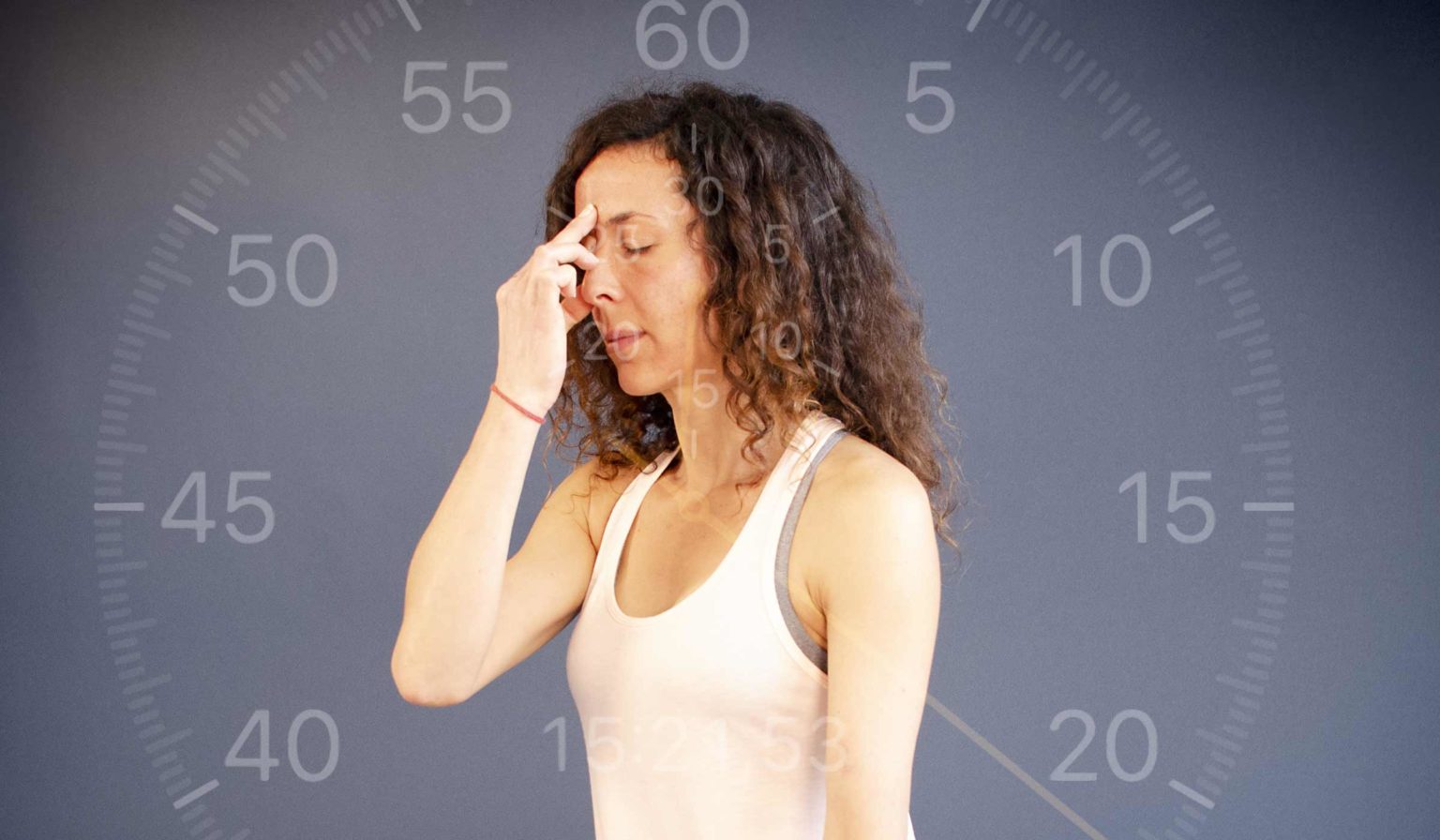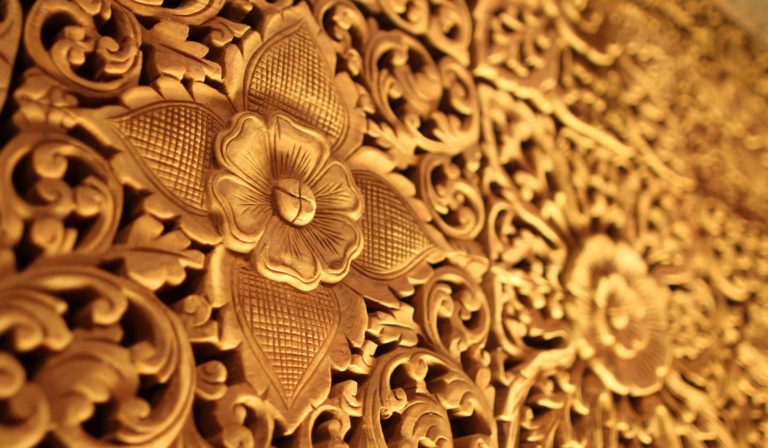Nadi shodhana pranayama is a fantastic breathing exercise. When you get it right, regular practice can bring you immense benefits. Though the exercise is simple, you need the proper knowledge. In this post, I will be answering how long time nadi shodhana pranayama should last for the best results. I will be giving you precise and practical advice that you can use in your own practice starting today.
Why should you listen to me?
There is a lot of information about pranayama out there. I am sure you want to take advice from someone who has solid expertise on the topic. So before starting, let me just clarify where my knowledge of pranayama comes from. That way you can decide for yourself if you think my advice is worth your time.
I have 20 years of experience teaching and practising nadi shodhana. For most of that time, nadi shodhana has been a daily practice for me. I am educated in a yoga lineage that gives pranayama uttermost attention. We teach it in city classes as well as deep delving yoga retreats. My teacher Swami Janakananda and other high-level practitioners in his entourage have taken nadi shodhana to incredibly high levels.
For how long time should you do nadi shodhana?
Now back to the question: how long time should nadi shodhana last? A quick answer would be 10 to 20 minutes. For a longer answer, we need to get into details.
When you do nadi shodhana, you don’t just sit down and start straight away. And you don’t just stand up and go back to daily activities once you are ready. In reality, you will first need time to tune in. Then there is the time for your actual practice. Finally, you also need quiet time to let the effects settle.
Tuning in
Ideally, you should have already warmed up with yoga poses and other pranayamas before you start the alternate breath. Nadi shodhana should be at the end of your pranayama sequence. In that case, your tuning in will be taken care of. On the other hand, If nadi shodhana is a stand-alone practice, you need time for motionlessness. Sit in your meditation pose for several minutes and just let your breath calm down. The tuning in phase will add an absolute minimum of three minutes to your total practice time.
Actual practice
How long time your actual practice should take depends above all on your level of experience. For a neophyte, 5 minutes is a good starting point. An experienced practitioner will spend around 10 minutes in this stage. On the other hand, for an ardent high-level yogi, the practice phase of nadi shodhana can last as long as twenty minutes.
Calming down phase
At an absolute minimum, keep sitting still enjoying the effects of your practice for five minutes if nadi shodhana ends your practice. If you are moving on to a different method afterwards, then two minutes suffice.
Set duration by counting rounds and rhythm
Now I have given you some different benchmarks for how long nadi shodhana should ideally last. However, measuring time in minutes is not very helpful for you as a practitioner.
Deciding the duration of nadi shodhana with time can help a teacher guide beginners or groups of participants with varying levels. It is also helpful for recorded sessions such as the ones here on Forceful Tranquility. However, when you practice alone without a teacher, there is a better way.
The way to measure time for the alternate breath is to count cycles and to count the rhythm.
How to count rounds
Counting rounds is straightforward. One round of basic nadi shodhana consists of an in-breath through your left nostril, then an out-breath through your right nostril. Now follows an in-breath through the right and finally an out-breath through the left. In the complete variation of nadi shodhana, you will also add breath retentions after each in-breath.
Deciding the number of rounds
Depending on your level and the stage of the alternate breath you are practising, your choice of rounds will differ. I recommend beginners to do eleven cycles when first starting with the simple version of nadi shodhana. That usually gives around 5-8 minutes of practice for a beginner, depending on the length of their breath.
Now the idea with nadi shodhana is to breathe as slowly as possible. The duration will be prolonged as you become more proficient. As that happens, you should do fewer rounds. First lower to nine, then to seven and finally to five rounds. All while making sure that the length of practice time remains around 7-10 minutes.
Once you are proficient in the alternate breath’s initial version, you can go ahead and add breath retention. When you reach this stage, I recommend five rounds as well. That is the standard recommendation in our tradition.
Counting to maintain even rhythm
Keeping check of how many rounds you do is only part of measuring practice length. The other part is to count to maintain an even rhythm. Silently count how long time it takes for you to breathe in and out and hold your breath if you are at a more advanced stage. Maintaining a rhythm similar to that of a ticking clock is good.
1, 2, 3, 4, 5….
Or if you want it to feel calmer, you add an “om” on each other second.
1, om, 2, om, 3, om, 4, om, 5, om…
Fixing proportions to keep it exact
For simple nadi shodhana without breath retention, I recommend the proportions 1:1. That means that your in-breath and out-breath should be equally long. By counting both your rounds and your rhythm, you will thus be able to precisely control how long time your nadi shodhana will take. Doing that will make you feel safe with your rhythm. You will know from experience that you have successfully maintained it previously.
Examples of durations with basic nadi shodhana
11 rounds with eight seconds per in- and out-breath gives almost six minutes of practice time. That is a duration that most confirmed beginner will be able to maintain. Add to that three minutes of tuning in and five minutes of quiet motionless afterwards, and you arrive at 14 minutes.
9 rounds with 15 seconds per in- and out-breath makes for 9 minutes of practice time.
7 rounds of 25 seconds per in- and out-breath translates into 11 minutes and 40 seconds of practice time.
5 rounds of 40 seconds per in- and out-breath gives 13 minutes and 20 seconds of practice time.
The importance of slowing down the breath
Practice length is not the only criteria for a rewarding practice. To reap this pranayama’s benefits, you also want to breathe so slowly that you are close to your limit. In the beginning, that will not be much slower than the normal breath. At this point, nadi shodhana is a painful struggle. However, with regular practice using counting, you will soon see be capable of stretching your breath more and more. As you become used to breathing close to your limit, it will become enjoyable and profoundly relaxing.
What happens if you do too little or too much?
If your nadi shodhana is too short, it will only give you a superficial effect. The same is true if you avoid slowing down your breath, not challenging your natural breathing pattern.
If your nadi shodhana is too long. Then you will find it hard to slow down sufficiently. Breathing at the limit of your capacity, you will complete five rounds at a certain speed. However, prolonging to ten rounds, you would not be able to keep the same slow rhythm. If you try to force yourself to breathe slower than you are ready for, you will not be able to maintain your chosen rhythm throughout all the rounds you set out to do.
Key takeaways
- In this article, I have been discussing how long time should nadi shodhana last. The short answer is ten to twenty minutes.
- You need to consider that you need time to calm down before you start and time to stay motionless afterwards so that the effects can settle.
- Bear in mind that thinking in terms of minutes is not practical. To control the length of your pranayama practice, use counting. Count both to maintain an even and precise rhythm and do the number of rounds you decide beforehand.
- Correct practice duration is essential to get good results from nadi shodhana. Breathing slowly, close to your capacity, is even more vital.




